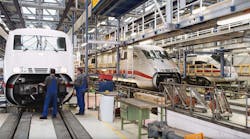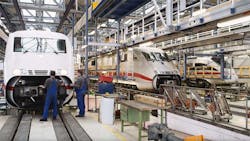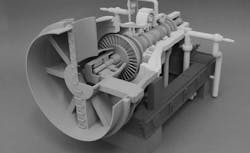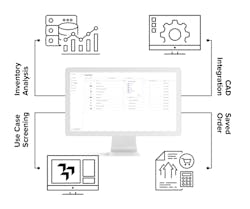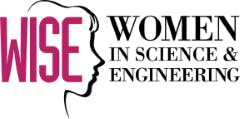Identify the Best AM Spare Parts Using Digital Qualified Inventory
At a Glance:
- Companies like 3YOURMIND offer software solutions for digitizing assets and providing in-depth analysis to identify the best spare parts for AM.
- SNCF, the French National Railway Company, evaluated 30,000 spare parts to pinpoint the ones that would be suited for AM.
Marie Thiébault, country manager, France & Spain, at 3YOURMIND presented during the TIPE 3D Printing Conference about how the international spare parts business will be impacted by additive manufacturing. Her presentation received an overwhelming and positive response and inspires industrial manufacturers to reconsider their AM approach. The numbers never lie and, as Thiébault’s showed, the data is more than compelling—it’s motivating.
The Promise of AM
During the past two decades, inventors and product developers have touted the benefits of 3D printing as the most effective rapid prototyping tool available. A great deal of emphasis has been placed on bringing products to market faster, and 3D printing continues to be a major advantage.
Most recently, 3D printing has adopted the term “additive manufacturing,” which mainly applies to the next stage of product development: production. Advancements in printed metals and plastics are enabling manufacturers to create customized products and low-volume production quantities that bypass conventional methods, including tooling or machining. Now, industry is moving in a new direction with additive manufacturing addressing obsolescence and part replacement.
AM is expected to make a significant impact to the maintenance, repair and operations (MRO) market, which predominantly includes players from transportation, heavy machinery and energy sectors. Over the next five years, up to 8% of SKUs will be a better business case for AM than conventional sourcing, according to a technical brief in the Journal of Operations Management.
What’s the Barrier to Entry?
“71% of companies say that a lack of knowledge is the greatest factor on project-by-project choices to user 3D printing or traditional methods.” (Jabil, A Survey of 3D Printing Stakeholders in Manufacturing 2019)
The average lifespan of a train is about 30-35 years, depending on whether it is used for freight or passenger transportation. Companies such as Deutsche Bahn and SNCF are the largest and most profitable railway companies in the world, and have become synonymous with quality and reliability.
However, they are constantly evaluating operational performance of equipment, trains and high-speed railways to remain an effective transportation partner for companies and consumers. Trains built in the 1980s and 1990s can continue to be profitable for the business but require significant maintenance and repair. Oftentimes, the replacement parts are either no longer available, or the tooling costs are too high to justify small volume or unique part production. The recent advancements in additive manufacturing technology and materials have become an effective tool to simply print parts on demand and bypass conventional tooling or production methods.
Although this is a viable solution, there are still many barriers to full-scale adoption:
Lack of expertise. Traditional tooling and machining have historically been a cost-effective and reliable form of production. This generation, focused on sustainability and efficiency, is beginning to take a new look at manufacturing that reduces waste and supports better financial outcomes for the business and its stakeholders. Yet, many OEMs do not have the technical knowledge or capacity to truly evaluate the benefits of additive manufacturing in their process. This lack of expertise can be quite the bottleneck for process improvement.
Large search volume. There are countless parts and components manufactured with a variety of technologies and materials used by OEMs. The primary issue is the lack of record keeping or consistent data across multiple facilities. The next generation of industrialization will rely heavily on data, and it will become the lifeblood of any production facility. Most manufacturers understand this but are having difficulty determining what types of parts can be built with AM, as well as how to correctly identify them within a sea of components.
Unclear cost of ownership. “If it isn’t broken, don’t fix it,” is an outdated way of thinking and no longer acceptable for our hyper-competitive marketplace. Combined with the lack of expertise and large-search volume comes the third major barrier for entry: determining the cost associated with transitioning from analog to digital. What is the upfront cost? When will we achieve return on investment? How much are we really saving? These are the questions that keep supply chain managers up at night.
What are the Goals?
To be innovative is to embrace technology to improve operational efficiencies, reduce cost or provide the business with some sort of competitive advantage. Additive manufacturing has proven itself as a potential solution for many OEMs.
A recent study by AMFG, a London-based MES and workflow software provider, predicts that additive manufacturing will experience a CAGR of 25% over the next few years, resulting in a $25 billion industry. Much of that growth is targeted towards MRO markets. According to Jabil, 44% of aerospace and defense companies have already adopted 3D printing for repair applications.
As AM adoption explodes, so does the need to develop proper workflows and processes to manage data effectively. To better understand the future of spare-part replacement, we must understand the associated goals.
- Decentralize spare-part access. Distributed manufacturing is possible with on-demand production of parts with AM. Warehousing of spare parts is a thing of the past, and the future of production comes with a push of the button.
- Reduce manufacturing costs. Machining and tooling are still the most cost-effective options for mass-manufacturing of parts and products. However, it’s overkill when it comes to low-volume replacement parts. Spending $100,000 for a singular part that costs $1,000 to keep a $1 million train operational is no longer necessary.
- Improve part performance. AM technology enables the design of complex assemblies and custom parts that were previously impossible to produce. Instead of recreating the same part, why not make improvements to better performance?
- Reduce lead time. Eliminate downtime. Every day that a plane, train or shipping vessel is out of commission is another day of lost profit. These businesses are built on the productivity of their products. By decentralizing spare parts, manufacturers gain immediate access to replacements and can dramatically cut down lead times from suppliers.
- Enhance small series production. By building a digital inventory and centralizing data, it’s possible to produce parts on demand and only when necessary. This is highly relevant for maintenance applications and quick-fix solutions that enhance customer relationships and, ultimately, improve user experience.
How to Identify AM-Ready Spare Parts
3YOURMIND offers a complete software package that is equipped to digitize assets and provide in-depth analysis to identify the best spare parts for AM.
Today, the majority of spare parts will require conventional manufacturing methods only because the data is unfinished and building the digital library takes time. Additionally, as AM matures, so will access to new materials and processes that will expand the opportunities to identify more parts. In a few short years, it’s possible that 40-50% of the spare part industry may be produced with 3D printers.
In short, data aggregation is the key to success.
3YOURMIND provides a thorough examination and assists in identifying the best spare parts by analyzing economic and technical data. Which parts are the most relevant to your process? How much does it cost? How long does it take to produce?
This assessment structure includes data sources and extraction modes to spot AM-ready parts. This includes part requirements, materials, qualifications, technologies, performance metrics and traceability. It’s a coordinated and collaborative effort to develop an effective workflow software and, once the groundwork is finished, it begins to build itself. Imagine an orchestra with artificial intelligence.
Real-World Application
SNCF, the French National Railway Company founded in 1938, operates over nearly 20,000 miles of route and has approximately 14,000 trains in operation. Considered one of the early pioneers of railway travel in Europe, SNCF has relied on innovation to stay competitive and relevant.
The company approached 3YOURMIND with challenges that most mature manufacturers face in 2021: (1) no 3D CAD drawings of parts; (2) a messy ERP system; and (3) minimal lack of AM experience or knowledge.
3YOURMIND recommended its Agile PLM solution and began identifying AM relevant parts that would save SNCF time and money. Among the results:
- 30,000 total spare parts were evaluated
- 10.3% of parts identified were an ideal match for additive manufacturing
- SNCF is saving considerable amount of money per year in spare-part production costs
- Lead time for parts shortened from 2.5 months to 10 days with AM delivered parts
SNCF is only scratching the surface of possibilities using the solution. With plans to incorporate an automatic pricing model and expectations to address other areas of the business, the opportunities are seemingly endless.
This proven method of spare-part replacement with AM and digitization of assets indicates a smooth and steady path ahead, with nothing but optimism on the horizon.
Editor's Note: Marie Thiébault, country manager, France & Spain, at 3YOURMIND, holds a Master’s degree in materials science and engineering. Her presentation, “How to Identify Great Spare Parts Applications for AM?” was part of the TIPE 3D Printing, 2021, conference agenda.
Editor’s Note: Machine Design’s Women in Science and Engineering (WISE) hub compiles our coverage of gender representation issues affecting the engineering field, in addition to contributions from equity seeking groups and subject matter experts within various subdisciplines. Click here for more.
